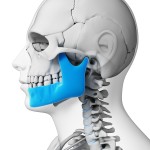
Around 80% of patients with temporomandibular joint disorder (TMD) have some form of internal derangement. Most can be treated with non-surgical approaches. Patients who do not respond to these treatments may require more invasive procedures such as arthrocentesis and arthroscopic lavage.
The aim of this review was to assess whether arthroscopy or arthrocentesis is most effective and feasible in the management of internal derangement of the temporomandibular joint (TMJ), specifically in relation to joint movement and pain.
Methods
Searches were conducted in PubMed, Cochrane Database of Systematic Reviews, the Cochrane Central Register of Controlled Trials (CENTRAL), Medline, Embase and CINHAL databases. This was supplemented by a manual search of oral and maxillofacial journals.
Randomised or quasi-randomised controlled trials (RCTs), controlled clinical trials (CCTs), and retrospective studies aimed at comparing arthrocentesis and arthroscopy in the treatment of anchored disc phenomenon, closed lock, anterior disk displacement with or without reduction (ADDR/ADDWR), capsulitis, and synovitis were considered. Study quality was assessed.
Meta-analyses were conducted only if there were studies of similar comparisons, reporting the same outcome measures. For binary outcomes, a standard estimation of the odds ratio (OR) by random effects model was calculated if heterogeneity was detected, otherwise a fixed effect model was used
Results
- 6 studies involving a total of 281 patients were included (2 RCTs, 2 CCTs and 2 retrospective studies).
- Follow up periods ranged from 1 month to 28 months.
- Two were considered to have a low risk of bias, 4 a moderate risk of bias.
- The improvement in maximal inter-incisal opening (MIO) after arthroscopy was significantly better than after arthrocentesis (WMD -1.86 mm, 95% CI -2.93 to -0.79; -P = 0.0006) I2 = 82%.
- There was a statistically significant difference in pain reduction between arthroscopy and arthrocentesis patients (fixed: WMD = -0.44, 95% CI -0.57 to -0.31; P = 0.00001) I2 = 88%.
- There was no statistically significant difference between the two groups with regard to the incidence of postoperative complications (OR 1.15, 95% CI 0.30–4.43)
Conclusions
The author concluded
Arthroscopy lysis and lavage was found to have superior efficacy in improving MIO and reducing pain when compared to arthrocentesis. Further, the incidence of postoperative complications was comparable for the two techniques. However, the current meta-analysis is in- complete due to the paucity of good quality studies in the high-impact, peer- reviewed literature and, therefore, more better-designed studies are required to address this important question before final conclusions can be drawn as to the true comparative outcomes of TMJ arthrocentesis versus TMJ arthroscopy.
Commentary
A good range of databases was searched for this review although study selection, data abstraction and risk of bias have been conducted by a single reviewer. As both pro- and retrospective studies have been included the risk of bias assessment have been developed for this review by from a range of reporting criteria ( MOOSE; STROBE and PRISMA statements.) The meta-analyses have been conducted using all the included studies, although sensitivity analysis have been conducted with the analyses being restricted to the two systematic reviews with similar findings.
Two Cochrane reviews have been conducted looking separately at arthrocentesis ( Guo et al 2009) and Arthroscopcopy (Rigon et al 2011). The arthrocentesis review only included two trials at the time both of which are included in this new review at the time Guo et al concluded:-
There is insufficient, consistent evidence to either support or refute the use of arthrocentesis and lavage for treating patients with temporomandibular joint disorders. Further high quality RCTs of arthrocentesis need to be conducted before firm conclusions with regard to its effectiveness can be drawn.
The Cochrane arthroscopy review included 6 trials and concluded:-
Both arthroscopy and nonsurgical treatments reduced pain after 6 months. When compared with arthroscopy, open surgery was more effective at reducing pain after 12 months. Nevertheless, there were no differences in mandibular functionality or in other outcomes in clinical evaluations. Arthroscopy led to greater improvement in maximum interincisal opening after 12 months than arthrocentesis; however, there was no difference in pain.
Links
Al-Moraissi EA. Arthroscopy versus arthrocentesis in the management of internal derangement of the temporomandibular joint: a systematic review and meta-analysis. Int J Oral Maxillofac Surg. 2014 Aug 7. pii: S0901-5027(14)00258-6. doi: 10.1016/j.ijom.2014.07.008. [Epub ahead of print] Review. PubMed PMID: 25123511.
Guo C, Shi Z, Revington P. Arthrocentesis and lavage for treating temporomandibular joint disorders. Cochrane Database of Systematic Reviews 2009, Issue 4. Art. No.: CD004973. DOI: 10.1002/14651858.CD004973.pub2.
Rigon M, Pereira LM, Bortoluzzi MC, Loguercio AD, Ramos AL, Cardoso JR. Arthroscopy for temporomandibular disorders. Cochrane Database of Systematic Reviews 2011, Issue 5. Art. No.: CD006385. DOI: 10.1002/14651858.CD006385.pub2.
Dental Elf -2nd Aug -2011 – Arthroscopy for temporomandibular disorders

SR found that both arthroscopy and nonsurgical treatments reduced pain after 6 months. http://t.co/Xah8jZ2PTA
[…] Dental Elf – 10th Sept 2014 – Temporomandibular arthoscopy may be better than arthrocentesis… […]
[…] Temporomandibular arthoscopy may be better than arthrocentesis for temporomandibular joint disorder […]
[…] Temporomandibular arthoscopy may be better than arthrocentesis for temporomandibular joint disorder […]